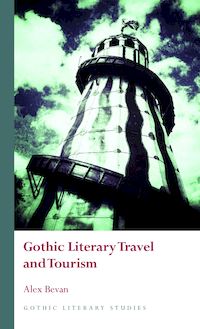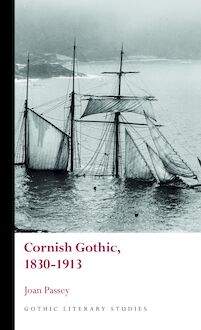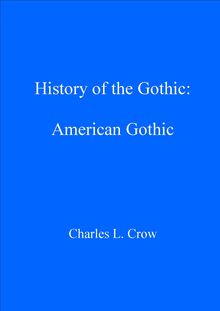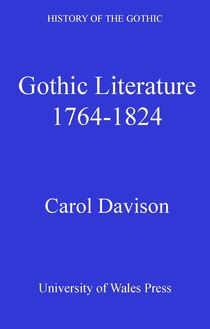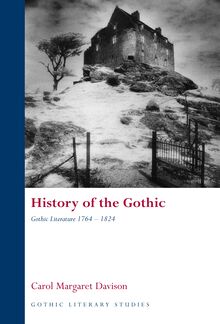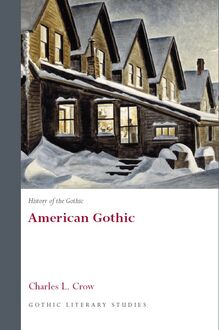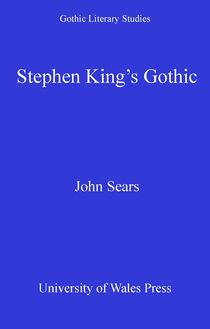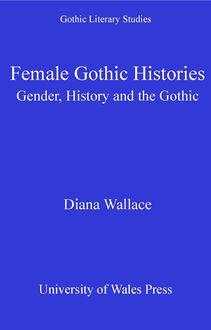-
 Univers
Univers
-
 Ebooks
Ebooks
-
 Livres audio
Livres audio
-
 Presse
Presse
-
 Podcasts
Podcasts
-
 BD
BD
-
 Documents
Documents
-
- Cours
- Révisions
- Ressources pédagogiques
- Sciences de l’éducation
- Manuels scolaires
- Langues
- Travaux de classe
- Annales de BEP
- Etudes supérieures
- Maternelle et primaire
- Fiches de lecture
- Orientation scolaire
- Méthodologie
- Corrigés de devoir
- Annales d’examens et concours
- Annales du bac
- Annales du brevet
- Rapports de stage
La lecture à portée de main
Vous pourrez modifier la taille du texte de cet ouvrage
Découvre YouScribe en t'inscrivant gratuitement
Je m'inscrisDécouvre YouScribe en t'inscrivant gratuitement
Je m'inscrisEn savoir plus
Vous pourrez modifier la taille du texte de cet ouvrage
En savoir plus

Description
Sujets
Informations
| Publié par | University of Wales Press |
| Date de parution | 15 janvier 2012 |
| Nombre de lectures | 0 |
| EAN13 | 9781783164912 |
| Langue | English |
Informations légales : prix de location à la page 0,0824€. Cette information est donnée uniquement à titre indicatif conformément à la législation en vigueur.
Extrait
THE QUEER UNCANNY
SERIES PREFACE
Gothic Literary Studies is dedicated to publishing groundbreaking scholarship on Gothic in literature and film. The Gothic, which has been subjected to a variety of critical and theoretical approaches, is a form which plays an important role in our understanding of literary, intellectual and cultural histories. The series seeks to promote challenging and innovative approaches to Gothic which question any aspect of the Gothic tradition or perceived critical orthodoxy. Volumes in the series explore how issues such as gender, religion, nation and sexuality have shaped our view of the Gothic tradition. Both academically rigorous and informed by the latest developments in critical theory, the series provides an important focus for scholastic developments in Gothic studies, literary studies, cultural studies and critical theory. The series will be of interest to students of all levels and to scholars and teachers of the Gothic and literary and cultural histories.
SERIES EDITORS
Andrew Smith, University of Glamorgan Benjamin F. Fisher, University of Mississippi
EDITORIAL BOARD
Kent Ljungquist, Worcester Polytechnic Institute Massachusetts
Richard Fusco, St Joseph s University, Philadelphia
David Punter, University of Bristol
Chris Baldick, University of London
Angela Wright, University of Sheffield
Jerrold E. Hogle, University of Arizona
The Queer Uncanny New Perspectives on the Gothic
Paulina Palmer
Paulina Palmer, 2012
All rights reserved. No part of this book may be reproduced in any material form (including photocopying or storing it in any medium by electronic means and whether or not transiently or incidentally to some other use of this publication) without the written permission of the copyright owner. Applications for the copyright owner s written permission to reproduce any part of this publication should be addressed to the University of Wales Press, 10 Columbus Walk, Brigantine Place, Cardiff CF10 4UP.
www.uwp.co.uk
British Library CIP Data A catalogue record for this book is available from the British Library.
ISBN 978-0-7083-2458-5 (hardback) 978-0-7083-2459-2 (paperback)
e-ISBN 978-1-78316-491-2
The right of Paulina Palmer to be identified as author of this work has been asserted in accordance with sections 77 and 79 of the Copyright, Designs and Patents Act 1988.
Cover image: blickwinkel / Alamy
C ONTENTS
Preface
1 Introduction: Queering the Uncanny
2 Secrets and their Disclosure
3 Queer Spectrality
4 Place and Space
5 Monstrous Others
Notes
Bibliography
P REFACE
I first became interested in writing The Queer Uncanny from noticing the number of works of contemporary fiction that use motifs and imagery relating to the uncanny and Gothic to explore and represent different aspects of lesbian, male gay and transgender sexuality and experience.
Since I published Lesbian Gothic: Trangressive Fictions in 1999 the interest in the interrelation between Gothic and queer in both popular culture and academia has increased considerably, and numerous new critical and theoretical texts relating to the topic have appeared in print. In locating the fictional and theoretical texts that I have needed to write the book, I have been fortunate to have access to Gay s The Word bookshop in London, one of the few remaining queer bookshops in the UK and an invaluable source of material, both new and old. I have also utilized the resources of the Cambridge University Library, and very much appreciate the help provided by the staff.
My work as a sessional lecturer for the MA in Gender and Sexuality at Birkbeck College, University of London, and conversations that I have held with students and members of staff have been intellectually stimulating and influenced my writing, as have the workshops on Gothic and queer writing that I have taught at City Lit College. In addition, I am indebted to Professor Andrew Smith for encouraging my work on the Gothic, to Dr Emma Parker for recommending fiction relevant to the book and to Dr Ana Cec lia Acioli Lima for sharing with me her readings of Jeanette Winterson s novels. I am grateful to Terry Ryman for reading sections of my work in progress, sharing his ideas with me and and talking over my readings of texts. I am also greatly indebted to Dr Les Brookes, the author of Gay Male Fiction Since Stonewall, for sparing time from his own writing to read and comment on my typescript and discuss my ideas.
For the queer community in Cambridge
1
Introduction: Queering the Uncanny
The uncanny is queer. And the queer is uncanny. 1
Fiction, queer perspectives and the uncanny
Horace Cross, the sixteen-year-old African American protagonist of Randall Kenan s A Visitation of Spirits (1989), one of the novels discussed in this study, lives in the rural Christian Fundamentalist community of Tims Creek, North Carolina. Obsessed with guilt on account of his homosexuality and his inability to achieve the heterosexual masculinity that his family expects of him, he takes the risk of confiding the secret of his sexuality to his cousin Jimmy Greene, a minister at the local Baptist church. Jimmy advises him to pray in an effort to resist temptation, confirming Horace s role as sinner and outcast. When his attempts at prayer predictably fail, Horace rejects the rational approach to life that he learnt at school and from the books on science he borrowed from the library and turns, in desperation, to magic. However, instead of the transformation into a bird that he hoped to achieve when he recited the magic spell, he finds himself the victim of a monstrous demon that, erupting from his psyche, takes him on a tour of the neighbourhood. Scenes he is forced to witness include a sermon in the church denouncing the evils of homosexuality and a visit to a community theatre in the nearby town where he has had affairs with white male actors. Here he sees a black figure dressed as a clown in the act of putting on white makeup, and is horrified to recognize it as himself. He thinks, Of all the things he had seen this night, all the memories he had confronted, all the ghouls and ghosts and specters, this shook him the most . 2 The novel concludes with him taking his grandfather s rifle and shooting himself in the head while his spectral double looks mockingly on.
Kenan s novel - as well as being of interest for its vivid representation of the conflict that Horace experiences, trapped as he is between the homophobia of the local community and his homosexuality, and its imaginative interweaving of fantasy and realism - is notable for its introduction of motifs and ideas relating to the uncanny, many of them recognizable from Sigmund Freud s essay on the topic and the work of theorists writing subsequently. There is, for instance, the idea that uncanny sensations, and the disturbing transformation of the familiar into the unfamiliar that they generate, reflect the projection of unconscious fears and desires originating in something repressed which recurs . 3 This is illustrated by the way Horace s feelings of guilt about his homosexuality and his fear that he has betrayed his racial identity by engaging in affairs with whites return to haunt him, transforming his surroundings into the site of the supernatural. The novel also introduces other motifs with uncanny resonance. These include the secret of Horace s transgressive sexuality which, although the residents of Tims Creek would prefer it to remain hidden, nonetheless comes to light when he discloses it to Jimmy; his encounter with his double at the theatre; and his feelings of uncertainty about his identity - is he homosexual or heterosexual, black or white, a human being, a bird or a monster? In addition, central to the theme of the conflict between contrary value schemes that Kenan treats, there is the fatal shift that Horace undergoes from a rational approach to life to a reliance on superstition and old, discarded beliefs 4 crediting magical transformation and demonic possession. And framing the narrative is the concept of taboo, another topic that Freud foregrounds. It is exemplified here by the Christian Fundamentalist prohibition of homosexuality. Jimmy endorses this by instructing Horace to pray to resist temptation, while the preacher vehemently hammers it home in the sermon he delivers.
Although Kenan s treatment of these themes is uniquely inventive, A Visitation of Spirits is not unusual in its use of concepts and motifs relating to the uncanny to represent facets of queer sexuality and experience and society s response to them. A number of other novels by contemporary writers, texts focusing on lesbian and transgender as well as male gay interests, employ them in a similar manner. H l ne Cixous describes the uncanny as appearing only on the fringe of something else , 5 while Rosemary Jackson, developing that thought, observes that it exists only in relation to the familiar and the normal. It is tangential, to one side. 6 This tallies with the experience of the queer individual living in a minority subculture and existing, as Sara Ahmed remarks in her discussion of queer phenomenology, slantwise 7 and in oblique relation to heteronormative society. With this in mind, I aim in this study to investigate the roles that the uncanny plays in a selection of queer fictional texts and the different ways writers represent it. The project raises interesting questions. What roles does the uncanny play in fiction of this kind? Is reference to it introduced merely to arouse a frisson of excitement or unease in the reader or is it pertinent to the themes the writer treats? Which aspects of the uncanny do writers prioritize and which features of queer existence do they employ them to explore? What narrative strategies and structures do they utilize in depicting them? How, if at all, does the lesbian treatment of the uncanny differ from the male gay?
The works of fiction I have selected for discuss
-
 Univers
Univers
-
 Ebooks
Ebooks
-
 Livres audio
Livres audio
-
 Presse
Presse
-
 Podcasts
Podcasts
-
 BD
BD
-
 Documents
Documents
-
Jeunesse
-
Littérature
-
Ressources professionnelles
-
Santé et bien-être
-
Savoirs
-
Education
-
Loisirs et hobbies
-
Art, musique et cinéma
-
Actualité et débat de société
-
Jeunesse
-
Littérature
-
Ressources professionnelles
-
Santé et bien-être
-
Savoirs
-
Education
-
Loisirs et hobbies
-
Art, musique et cinéma
-
Actualité et débat de société
-
Actualités
-
Lifestyle
-
Presse jeunesse
-
Presse professionnelle
-
Pratique
-
Presse sportive
-
Presse internationale
-
Culture & Médias
-
Action et Aventures
-
Science-fiction et Fantasy
-
Société
-
Jeunesse
-
Littérature
-
Ressources professionnelles
-
Santé et bien-être
-
Savoirs
-
Education
-
Loisirs et hobbies
-
Art, musique et cinéma
-
Actualité et débat de société
- Cours
- Révisions
- Ressources pédagogiques
- Sciences de l’éducation
- Manuels scolaires
- Langues
- Travaux de classe
- Annales de BEP
- Etudes supérieures
- Maternelle et primaire
- Fiches de lecture
- Orientation scolaire
- Méthodologie
- Corrigés de devoir
- Annales d’examens et concours
- Annales du bac
- Annales du brevet
- Rapports de stage

